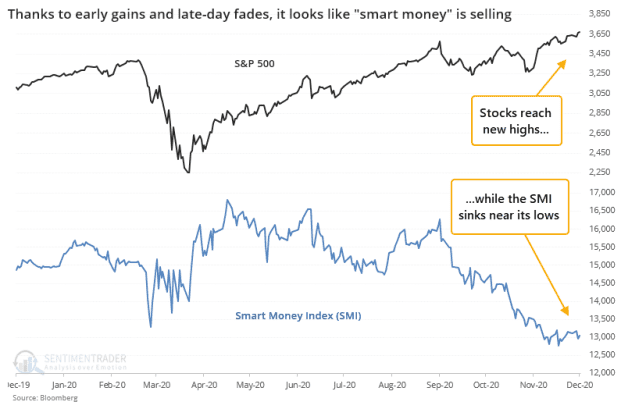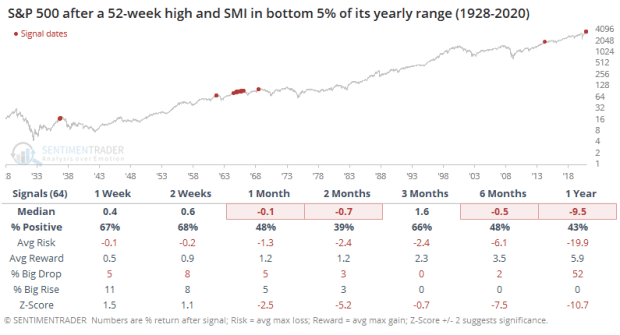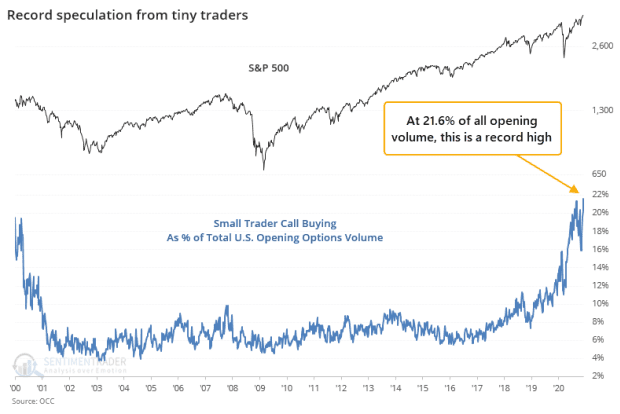This post was originally published on this site
Fresh all-time highs appear to be making the “smart money” anxious on Wall Street.
A gauge of so-called smart-money interest in stocks was at its lowest level in a year, even as equity benchmarks, though softening in Monday action, were trading near peak levels in the COVID-19 era.
There are a lot of ways to gauge the attitudes of hedge funds and other money managers toward stocks, but the folks at SentimenTrader use the smart money index, or SMI. It is a gauge first described by Lynn Elgert in Barron’s in the late 1980s, but is often associated with rocket scientist Don Hays, who has described the index as the smart money flow indicator, and is sometimes credited with popularizing the indicator.
The SMI, as Hays once described it in a 2001 interview with Barron’s, is calculated by taking the action of the Dow Jones Industrial Average DJIA, -0.49% in two time periods: the first 30 minutes and the last hour of trade. The thinking is that the activity that occurs in the final minutes of the day tends to be based on logic and reason, compared against the initial flurry of trading.
(Now the last half-hour is viewed as the period when the big boys play, highlighting a trend in which the bulk of the day’s volume has tended to be compressed within a matter of minutes.)
SentimenTrader’s data show that the SMI was nearing its lowest level of the year, suggesting that smart money may be taking a pause as markets scale new heights.
“Regardless, it’s unusual to see stocks rally so hard and the SMI sell off so drastically,” wrote Jason Goepfert, head of SentimentTrader and founder of independent investment research firm Sundial Capital Research, in a Monday research note.
The chasm between equity moves and the SMI was particularly notable Goepfert said (see chart below):

Source: via SentimenTrader
The disparity is significant to bullish investors because such gaps between a run higher for stocks and a lack of confirmation by “smart money” interest tends to result in subpar returns, the Sundial researcher notes.
“After any day when the S&P 500 SPX, -0.19% hit a 52-week high and the SMI was in the bottom 5% of its range, future returns were poor,” the analyst wrote.

SentimenTrader
Separately, the analysts note that so-called dumb money confidence hit 90% on Friday, which attempts to show what good market timers are doing with their money versus “bad” market timers.
This indicators suggests that if the dumb-money confidence is at 100%, then bad market timers are supremely confident in a market rally, which will likely result in the opposite happening.
The SentimenTrader folks say it’s hard to read these moves, rising dumb money and falling interest in smart money, as definitively contrarian all of the time.
That said, options action among small traders, those buying 10 or fewer contracts at a time, reached a record in call buying, often associated with perhaps overly bullish bets on the market.

SentimenTrader
Meanwhile, the Nasdaq Composite Index COMP, +0.45% on Monday was trading near an all-time high as the S&P 500 index and the Dow were pulling back from records put in on Friday.

